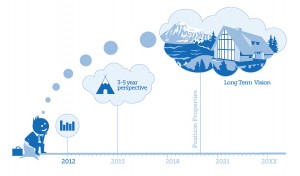Channel Development – Building on the Foundations
What do you need to understand and implement in order to be successful with a sales channel?
In my previous blog post on channel development, I mentioned the need for analysis and planning prior to recruiting channel partners for software companies. So, if you need to do some analysis, what is it that you need to analyse?
There are two things to analyse, and in my experience a major reason why a lot of ISVs have an unsuccessful initial experience with their new channel partners is that they only do one of the two pieces of analysis. What most ISV’s do is develop a list of potential partners in their target market who are capable of selling and supporting the product and then endeavor to recruit one or more of them.
The piece of analysis that is often missed, however, is understanding how the customer buys. This is an understandable omission as the ISV already has customers and will know reasonably well what makes them successful at sales and customer care. However, when you change your go-to-market model by entering a new market, or by changing from direct to indirect (or both), those factors that help you compete on your current model are disrupted.
In order to be successful with a sales channel in a new or existing market, it is essential that you understand what value your existing customers actually buy and who they currently get it from. Then you need to plan how to replicate this with your changed model.
Let me illustrate with an example. An ISV has the market leading mid-market business intelligence system in their home territory. It outsells its nearest rival 2:1. The ISV’s CEO will point to the three key features their software has that its rivals do not have and the benefits these bring to customers who buy the software. Asking this ISV’s customers what they value about the ISVs solution, however, yields additional data. Two other key factors in the purchase of this software emerge. The ISV’s dominant market position means firstly that the staff required to operate the system are easy to recruit and secondly that the CIO who signs off on the software has the reassurance that the choice was a safe decision (remember the old adage – no one gets fired for buying IBM). In this case, changing from direct to indirect in the existing market will not affect the value the customer buys. In a new market, however, the challenge is for the ISV to provide this value or mitigate the fact that they may not have it. To do this that they now need to complete the analysis by finding out what value their prospective customers in the new market requires because it may well be different.
Once this analysis is completed it provides key criteria with which to select your channel partners and also, if the value purchased is not available from a channel partner, to engage with other organisations that can supply the required value. Again, taking the example above, engaging with industry analysts who will independently vouch for the market leading features of the software may be a route to de-risk the decision for the prospective buyer. Equally, having a re-seller partner with a strong reputation for high quality training may help with the staffing issues.
This example was chosen deliberately because, as you will note, some of the things which the buyer valued in their choice of ISV could be described as intangible or qualitative – ‘reassurance that the choice was a safe decision’ is difficult to describe quantitatively. Other examples of this could be provision of industry insights, thought leadership, future development plans or sustainability of the ISV’s business.
Clearly finding out what your potential customer values and providing it entails a cost. However it is a lot cheaper to find out what your prospective customer really values before you recruit your channel partners. After all, if you choose using the criteria your prospective customers value, you might just find your partners provide what the customer really wants as part of its normal business.










